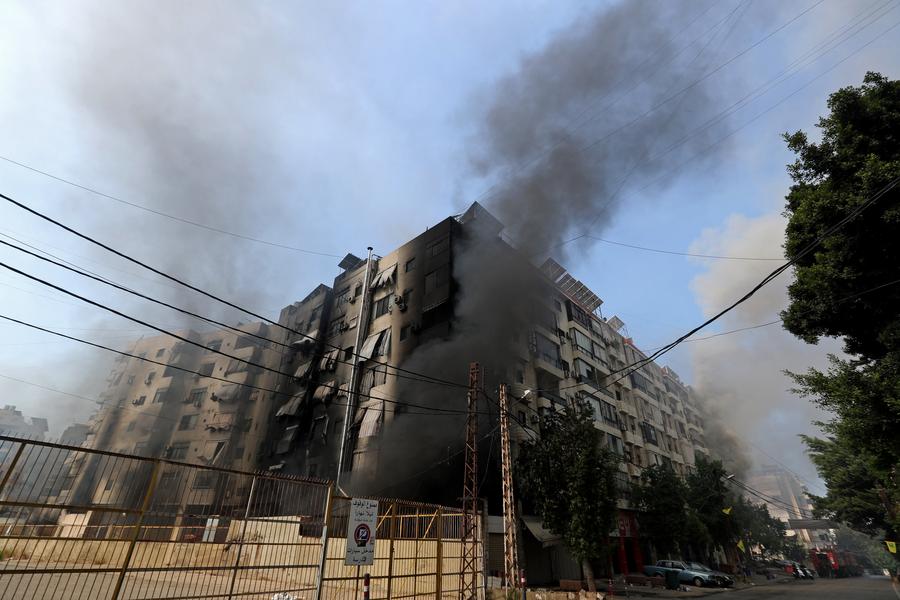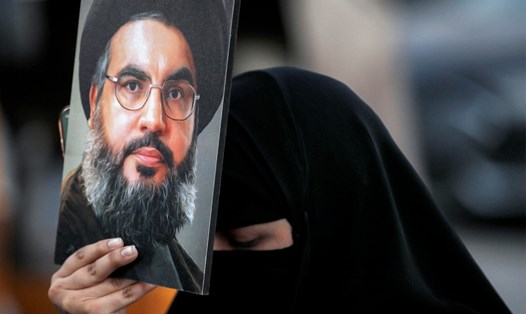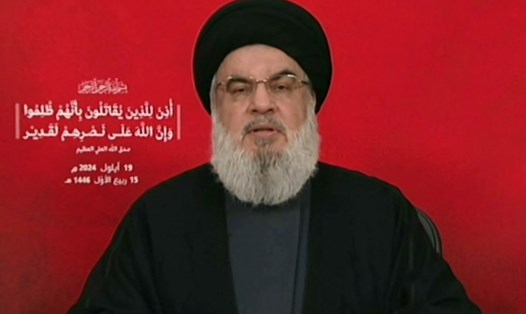Hezbollah leader Hassan Nasrallah died in a shocking manner in an Israeli airstrike on September 27. According to Israel Channel 12 news, Nasrallah may have suffocated from toxic gas inside his secret bunker when it was destroyed with a bunker-busting bomb.
When officials discovered the body of Hezbollah leader Hassan Nasrallah, no external injuries were noted, suggesting that the Hezbollah leader may have been buried under rubble while toxic gas from the explosions filled the bunker.
Dramatic revelations about the Hezbollah leader's death suggest the cause of death was likely asphyxiation. The report also added that Nasrallah may have died in "agony."
Lebanese security and medical workers who recovered the body of Hezbollah leader Nasrallah from the rubble in southern Beirut also told Reuters that he likely died from blunt force trauma from the blast. His body was taken to a nearby hospital.
The airstrike that killed the Hezbollah leader was carried out by the Israel Defense Forces using 80 bombs powerful enough to penetrate Nasrallah's underground hideout. Israeli intelligence had to intervene to identify Hezbollah's underground command center in Beirut.

According to CNN, 2,000-pound (more than 900 kg) bombs made in the US were likely used in the Israeli attack to kill Hezbollah leader Hassan Nasrallah.
Video released by the Israeli military on September 28 showed the planes carrying at least 15 2,000-pound bombs, including US-made BLU-109 bombs, Trevor Ball, a former senior explosives technician for the US Army, pointed out.
These bombs are often called “bunker busters” because of their ability to penetrate deep underground before detonating. On one of the planes equipped with the bombs seen in the video, Ball identified at least four as BLU-109 bombs with JDAM precision guidance.
Mr. Trevor Ball said that Israel may have used other large bombs in the operation to kill the Hezbollah leader, but only the BLU-109 was seen in the footage. The BLU-109 contains 535 pounds (242 kg) of explosives, significantly less than the MK84, another 2,000-pound bomb commonly used by the Israeli military.
Two senior Israeli defense officials told the New York Times that 80 bombs were used in the strike that killed Hezbollah leader Nasrallah.
Justin Bronk, a senior research fellow in air power and technology at the Royal United Services Institute in London, said images of the attack were consistent with the use of 2,000-pound BLU-109 bombs.
Video of the massive explosions in Dahiyeh, where the attack was carried out on Hezbollah leader Nasrallah's underground headquarters, shows multiple plumes of smoke consistent with the near-simultaneous detonations of multiple 2,000-pound bombs, Bronk pointed out.
Hassan Nasrallah, 64, is the leader of the Lebanon-based Hezbollah organization. Nasrallah played a central role in Lebanon's 2006 war against Israel. Under Nasrallah's leadership, Hezbollah transformed from a guerrilla group focused on resisting Israel's occupation into a major political player in Lebanon, holding seats in the Lebanese parliament and participating in government coalitions.










